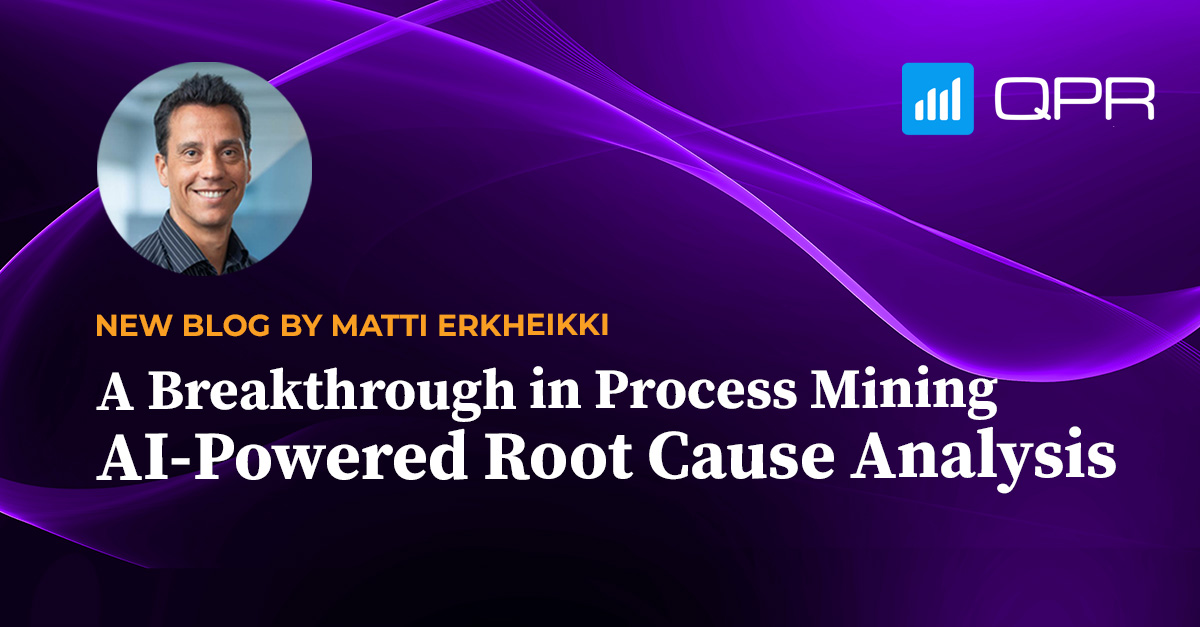See your business as it really runs.
Process mining reveals how your processes truly operate – and where they don’t. Fact-based visibility helps you cut delays and costs, improve efficiency, and deliver a better customer experience.
Why process mining matters
Process mining is not just analytics – it’s a decision-making tool that shows you exactly where to act next.
Cut costs and increase efficiency
by eliminating waste and delays.
Ensure compliance and reduce risks
by spotting deviations instantly.
Boost customer experience
with faster, more reliable processes.
Accelerate transformation
by identifying where automation and improvement have the biggest impact.
What makes QPR different
Most process mining tools require moving data into their own environment – adding complexity, cost, and security risks.
QPR ProcessAnalyzer is the first process mining software running natively in the Snowflake AI Data Cloud:
Unlimited scalability
Enterprise-grade security
Get started in minutes
The Best Value for Your Money: Enterprise-grade functionality, customer-friendly terms – at a fraction of competitor costs.
Process mining use cases
Purchase-to-Pay (P2P)
Cut costs and speed up supplier payments by eliminating inefficiencies in the procurement process.
Order-to-Cash (O2C)
Accelerate cash flow by shortening order cycles and removing delivery or invoicing delays.
Accounts Payable & Receivable
Gain control over payments and collections to reduce delays and improve financial predictability.
Compliance & Risk
Ensure every process step follows rules and regulations to minimize risks and avoid penalties.
Process mining and AI: A perfect match
Without process mining, AI is flying blind. With QPR, your AI initiatives gain the clarity and data quality they need to succeed.

The best value for your money
Customers have selected QPR ProcessAnalyzer because it provides enterprise-wide process mining at a fraction of the cost – with unique Snowflake-native capabilities and customer-friendly terms.
Discover industry-specific value
Every industry faces unique process bottlenecks. Process mining uncovers inefficiencies, ensures compliance, and accelerates results.
Accelerate R&D and get medicines to market faster
Bottlenecks in clinical trials and production slow you down. QPR ProcessAnalyzer helps you spot inefficiencies across your value chain—so you can streamline operations, stay compliant, and deliver medicines faster.
Settle claims faster and keep customers happy
Slow claims processing frustrates everyone. QPR ProcessAnalyzer shows you exactly where delays happen across your operations—so you can speed up settlements, cut costs, and build trust with customers.
Keep production running smoothly and costs down
Downtime and quality issues eat into your profits. QPR ProcessAnalyzer helps you spot bottlenecks in real time and fix them fast—so you can deliver better products at lower costs.
Create seamless shopping experiences customers love
Empty shelves and delayed deliveries drive customers away. QPR ProcessAnalyzer gives you visibility from supplier to checkout—helping you keep inventory flowing.
Speed up approvals and simplify compliance
Manual processes slow everything down. QPR ProcessAnalyzer shows you exactly where time gets lost—so you can approve loans faster and deliver the smooth digital banking experience customers expect.
Customer rating: 9.7/10
This outstanding score reflects the high level of satisfaction our customers consistently experience. A 9.7 out of 10 means that nearly all of our clients are extremely happy with the quality, service, and overall experience we provide.






Take the next step in process excellence.
Read our latest blogs, watch insightful webinars, and discover proven strategies to accelerate automation, compliance, and AI-driven transformation.

Enterprise Architecture in the Age of AI: From Strategy to Measurable Business Value

